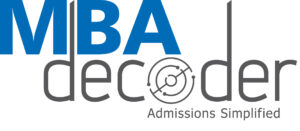This past year, there has been increasing interest from applicants about European MBA programs. A major reason is an uncertainty about the US visa laws as well as a lack of clarity over Brexit, which has made both US and UK lose some sheen among Indian applicants as favored MBA countries.
This article makes a case for a European MBA versus an American MBA.
1. More international: the biggest difference between the European MBA and American MBA programs is the high diversity on European campuses. Most European MBAs boast of over 90% international students. With peers from 50-80 nationalities, you couldn’t ask for a better inter-cultural experience. The INSEAD MBA for example, which calls itself “The Business School For the World” has students from 94 nationalities. Most US b-schools in comparison have only 30-45% of the class composed of internationals, representing 30-40 countries. Only a few cross the 5 top-ranked these are not the top-ranked MBAs. Among these is the 83rd ranked Babson MBA which has 71% foreigner passport holders, while UCL Paul Merage MBA (42nd ranking, US News) has about 50% international students.
As most of the MBA education is through peer-based learning, having a diverse student body is highly beneficial. International students bring in diverse perspectives driven by their different cultures, and socio, economic and political environment, which benefit the class during discussions and project work. Moreover, the network you build with this set of classmates is more international in nature.
2. Smaller Duration: European MBA programs are perfect if you can’t commit two years to an MBA. Most of them are 10-12 months long. Although in the US there are a handful of one year MBAs, the bigger trend is for a two-year program. The only longer European programs are offered by IESE, Spain (19 months), ESADE, Spain (has options for a 12, 15 or 18 months program), and Manheim, Germany( option between 12 months and 15 months).
One year MBAs are super intensive. They have smaller internships, which is a drawback if you wish to explore many career choices. One year MBAs are ideal for students who are older, have family commitments and need to start earning sooner; and are not seeking drastic career changes after the MBA.
3. Smaller dent on the pocket: Being smaller duration programs, the European MBAs also have smaller price tags, another consideration point for several applicants. In addition, you get back to work a year earlier, reducing the opportunity cost of studying.
4. More matured class: European MBA programs attract older students with more work experience. While the average work experience of students at US MBA programs is 4 – 5 years, at the European programs, students join with 5 to 7 years of work experience. The average age of students at INSEAD is 29 years. Only 4% of the class is below 26 years, whereas over 31% students are over 31 years. At IMD Switzerland, average class age is 31 years, whereas its 32 years at Edhec, France. In the US in comparison, the average age of MBA students is mostly around 26-28 years.
5. Two intakes: You missed the application bus for the American fall intake? Fear not, European b-schools such as HEC, INSEAD, EDHEC, IE have a Fall as well as a Spring intake and will come to your rescue. In the USA, Columbia Business School is the only high-ranked MBA program that has two intakes.
6. The dizzying GMAT score requirement is lesser: because the European MBA attracts older applicants, GMAT score requirement tends to be lesser, while their quality of work experience and overall profile gain more importance for admission. Compare the average GMAT scores of US MBAs with the European ones and you will see the difference. Wharton’s average GMAT score is 730 while Kellogg’s is 732. Europe’s top program, INSEAD’s average GMAT score in comparison is 709.
7. Wider career opportunities: Despite the smaller programs and a lack of full-blown internships, European MBAs, like the American ones, offer great employment opportunities, that include a change in industry/function/location. While a large number of the class stays in Europe, The European b-schools send out a sizeable number of students to different regions across the world. On the other hand, about 90% students in US b-schools start their career in the US after completing their MBAs.
8. More stringent full-time work experience requirement : Most US b-schools do not have a minimum work experience requirement, although they prefer applicants with work experience. The European MBA programs in comparison specifically ask for at least 2-3 years of work experience.
9. Offer profile evaluation: Lastly, all European MBA programs offer a profile evaluation. Send your resume to them, and they would get back to you on whether they would like you to apply. We believe this is an unbeatable service and always advise applicants to avail it if they are applying to European programs. You are already known to the admissions team, even before you apply.
